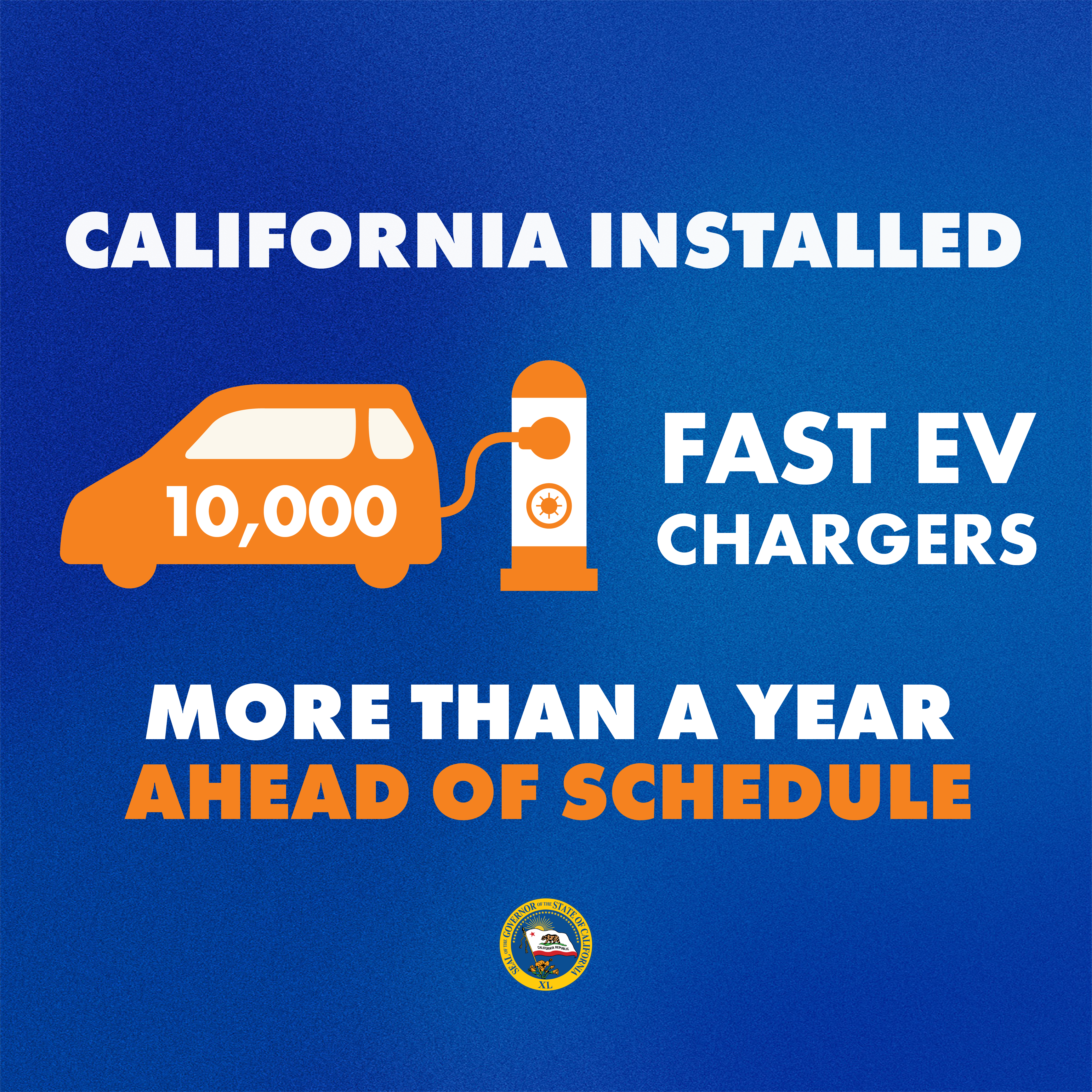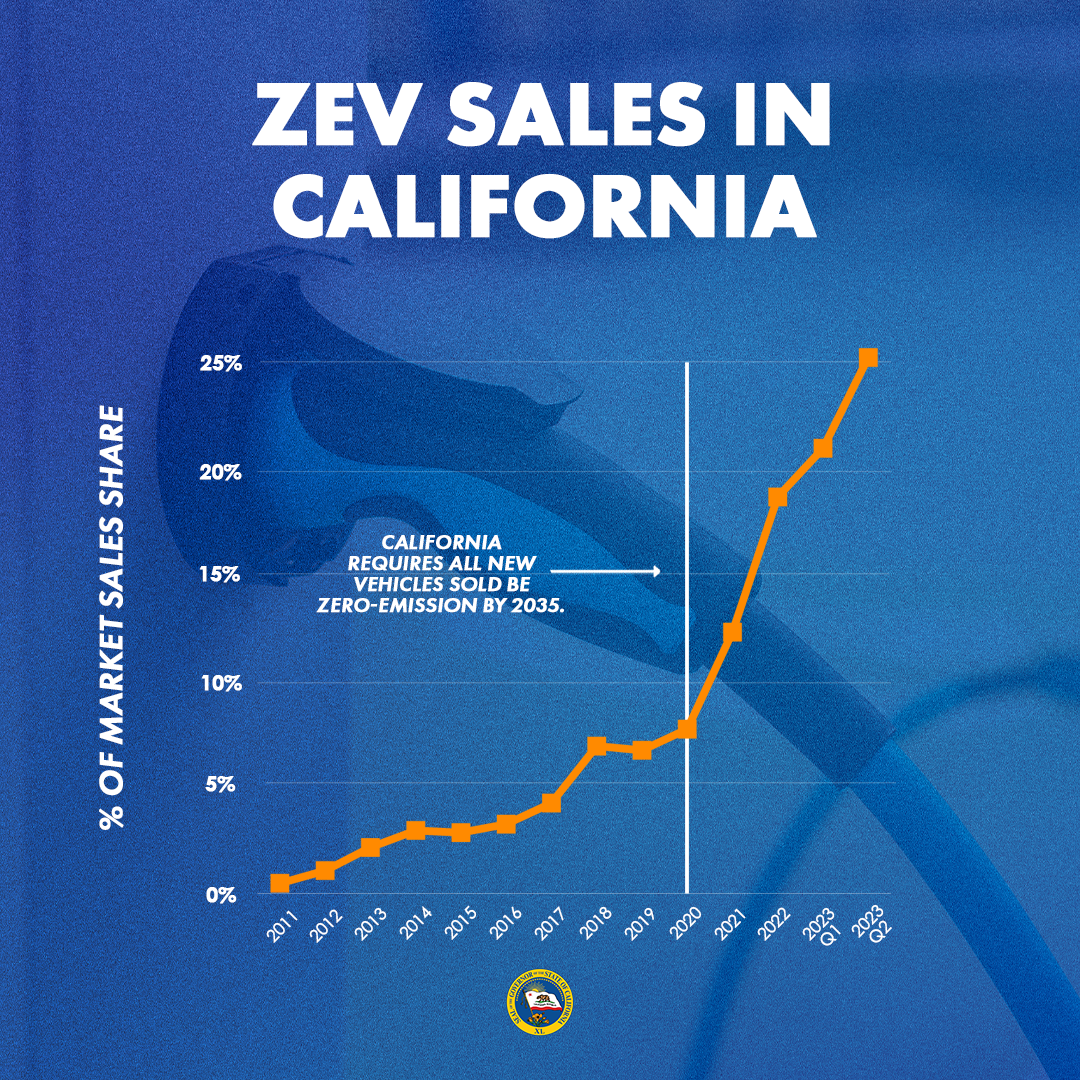NEW YORK – Today, during Climate Week, Governor Gavin Newsom announced California achieved its goal to install 10,000 fast chargers for electric vehicles more than a year ahead of schedule, just a week after the state announced new efforts to quickly deploy EV chargers in communities most harmed by pollution and the Legislature approved nearly $2 billion for EV charging infrastructure.
In 2018, then-Governor Jerry Brown established the fast charger goal as part of an executive order on zero-emission vehicles (ZEV). Since that time, the number of fast chargers installed nearly quadrupled from 2,657 to more than 10,000 today – for a total of more than 93,000 public and private shared chargers in California.

Fast chargers can recharge an all-battery electric vehicle to 80 percent capacity in about 30 minutes, depending on the size of the vehicle battery and the power level of the charger. The network allows EV drivers to travel across the state with public fast chargers conveniently located along interstates and highways.
“California doesn’t just set big goals – we achieve them. Yet again, we’re showing the world what real climate action looks like.
We’re deploying EV chargers to communities most hurt by pollution and fast chargers along some of our most traveled highways. This is the future of transportation – and it’s happening right now all across California.”
Governor Gavin Newsom
The milestone comes as one in every four new cars sold last quarter in California was zero-emission. Earlier this year, the state surpassed its goal of selling 1.5 million ZEVs – also ahead of schedule.
And last week, California opened applications for $38 million in equity-focused incentives to fund publicly accessible EV charging stations in low-income and disadvantaged communities in 28 counties across California.
Additionally, the Legislature passed a bill by Assemblymember Eloise Gómez Reyes and Senator Lena Gonzalez that would continue funding for another decade for three of the state’s leading clean vehicle and infrastructure programs that date back to 2007. The bill – now awaiting the Governor’s signature – would provide close to $2 billion for all ZEV and supporting infrastructure through 2035. The infrastructure funded through these efforts will help ensure convenient charging and refueling across the state.
To accelerate the transition and help reach the goal to install 250,000 chargers, the state is investing over $10 billion for zero-emission cars, trucks, buses and infrastructure through the historic $52-plus billion California Climate Commitment.
California is already home to 56 ZEV and ZEV-related manufacturers and leads the nation in ZEV manufacturing jobs. Earlier this year, the California Energy Commission awarded nearly $200 million to support in-state manufacturing of ZEVs, ZEV components and batteries, and ZEV charging or refueling equipment. Additional funding will be available early next year.
CALIFORNIA’S ZEV RECORD
Since the Governor’s executive order in 2020 calling for a rule to require all new car sales to be zero-emission by 2035, ZEV sales have risen dramatically.

- 25.4% of all new cars sold in California last quarter were ZEVs, according to the California Energy Commission (CEC)
- 125,939 ZEV sales in Q2 2023
- 1,623,211 total ZEV sales to date
- 34% of new ZEVs sold in the U.S. are sold in California, according to the Veloz EV Market Report
- If California were a country, we’d rank 4th in EV sales behind China, the U.S. and Germany
- Thousands of dollars in grants and rebates available for low-income Californians (learn more at ClimateAction.ca.gov)
- The historic $52-plus billion California Climate Commitment includes over $10 billion for zero-emission cars, trucks, buses and infrastructure.

